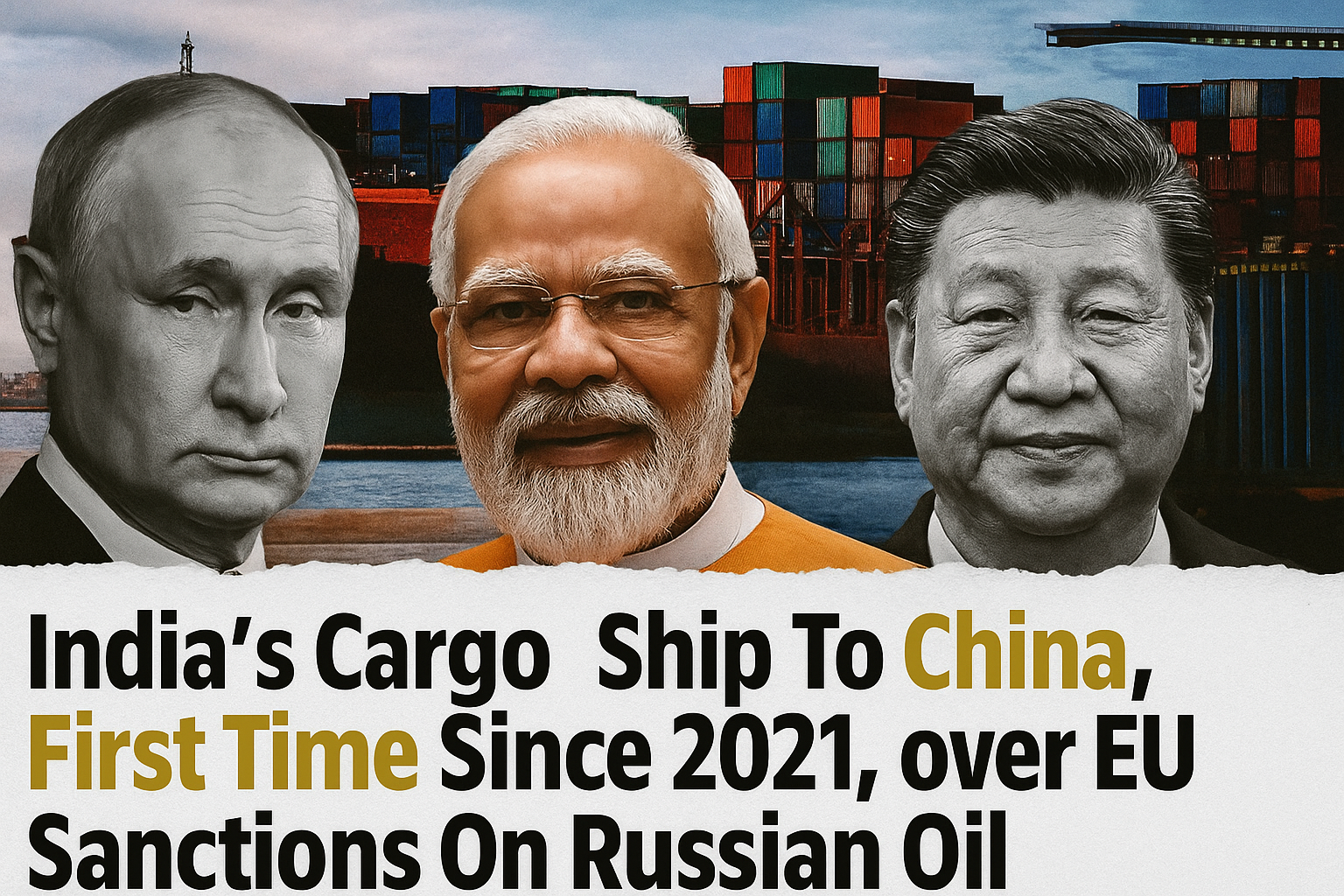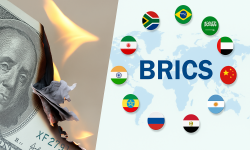Synopsis:
India Diesel Diplomacy: In July 2025, India made a bold geopolitical move by exporting Russian-linked diesel to China just before the EU’s latest sanctions took effect. The shipment, rerouted from Malaysia, exposed cracks in Western sanctions strategy and highlighted India’s growing energy independence. Defying U.S. tariffs and EU pressure, India balanced ties between East and West, strengthened its role within BRICS, and signaled a shift toward a multipolar energy order. This episode underscores India’s commitment to energy security, economic pragmatism, and strategic autonomy on the global stage.
Table of Contents
Introduction
In the ever-shifting arena of global geopolitics, energy is more than just fuel—it’s leverage. In July 2025, India diesel diplomacy took center stage when New Delhi made a move that caught global attention: a single diesel shipment to China, sourced from Russian crude, just days before the European Union’s latest sanctions took effect. What appeared to be a simple trade transaction was, in reality, a calculated geopolitical statement—one that exposed cracks in Western sanctions strategy and highlighted India’s growing confidence as a global power.
India’s Cargo Ship To China
The controversy began when Nayara Energy, a private Indian refinery partly owned by Russia’s Rosneft, exported 496,000 barrels of ultra-low sulfur diesel to China—the first such shipment since 2021. This was a textbook example of India’s diesel diplomacy in action. Originally bound for Malaysia, delays in the Strait of Malacca prompted a rerouting to China, allowing the deal to close before the EU’s 18th sanctions package could disrupt the transaction.
The swift pivot highlighted India’s ability to outmaneuver sanctions through strategic planning and alternative payment methods such as advance payments and letters of credit.
Western Pressure and India’s Defiance
The EU sanctions aimed to cut Nayara off from European shipping insurance and financial services. At the same time, the United States—under President Trump—hit India with a 25% tariff on goods, citing continued purchases of Russian oil, with the threat to raise it to 50%.
Rather than backing down, India diesel diplomacy proved its worth as India doubled down on its energy trade strategy. The decision to maintain ties with Russia while exporting to China made it clear: India will not compromise its energy security to appease external pressure.
For the first time since April 2021, India is sending diesel to China.
— Praffulgarg (@praffulgarg97) August 13, 2025
Tanker EM Zenith left Nayara Energy’s Vadinar port in Gujarat on July 18 with around 496,000 barrels of ultra-low sulfur diesel, just hours before EU sanctions kicked in on its Rosneft-linked refinery.
It’s… pic.twitter.com/SBDt1LFATV
China’s Quiet Advantage
China has long been the world’s largest buyer of Russian oil, yet it often escapes the same scrutiny India faces. By selling diesel to China, India diesel diplomacy not only secured a profitable transaction but also highlighted inconsistencies in Western sanctions enforcement.
This episode strengthened the emerging energy axis between India, Russia, and China—three powers increasingly aligned in resisting unilateral Western dominance.
The Bigger Picture: A Multipolar Energy Order
The July 2025 shipment illustrates that India diesel diplomacy is not just about trade—it’s about shaping a new global order. Key takeaways include:
Strategic Hedging – Balancing relationships with Russia, China, and the West.
Economic Pragmatism – Prioritizing affordable energy over political optics.
Geopolitical Signaling – Showing that sanctions are no longer universally effective.
India’s Broader Energy Strategy
India’s approach is shaped by the fact that it imports over 85% of its crude oil. Post-2022, it has actively diversified suppliers, with Russia now providing 40% of its imports. The Nayara shipment is just one example of a broader framework:
• Diversified Imports – Expanding energy ties with the U.S., Russia, Brazil, and Africa.
• Strategic Petroleum Reserves – Building buffers against market volatility.
• Clean Energy Push – Targeting 500 GW of renewable capacity by 2030, with initiatives in hydrogen, solar, and ethanol blending.
• Digital Infrastructure – Leveraging UPI and Aadhaar to streamline subsidies and improve access.
Diplomatic Implications: BRICS & Global South Leadership
India diesel diplomacy aligns with New Delhi’s growing leadership in BRICS and the Global South. At the 2025 BRICS Summit, India called for greater representation of emerging economies in institutions like the UN and IMF.
Key gains include:
South-South Trade – From $5 billion in 2001 to $90 billion in 2020 with Africa.
Alternative Payment Systems – Supporting de-dollarization efforts.
Climate Leadership – Initiatives like the International Solar Alliance.
Balancing Between East and West
India’s challenge is to keep India diesel diplomacy effective while maintaining strong Western economic ties. Trade with the U.S. exceeds $130 billion, and India remains active in the Quad and G20.
Risks and Rewards:
U.S. Tariffs – Possible escalation to 50% could hit exports.
EU Sanctions – Nayara’s Russian ties remain a vulnerability.
Global South Credibility – Defiance boosts India’s image as an independent voice.
Conclusion
The July 2025 diesel shipment to China was far more than a trade deal—it was a strategic demonstration of India diesel diplomacy. It showcased India’s ability to navigate sanctions, secure vital energy supplies, and assert independence in global affairs.
As the world shifts toward a multipolar energy order, India diesel diplomacy will remain central to New Delhi’s geopolitical playbook—balancing alliances, driving economic growth, and reshaping the rules of international trade.
The GeoLens – India || Defence || Global Affairs

Pratik Kondawale
Strategist | Indian Defence & Global Affairs
Founder of GeoLens.in, Pratik writes in-depth analysis on India’s defence strategy, military tech, and global power shifts delivering sharp insights thro


1 thought on “India Diesel Diplomacy Cargo Ship To China, First Time Since 2021, Faced With EU Sanctions On Russian Oil”